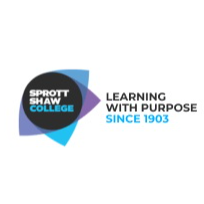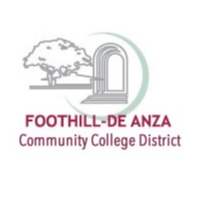• USA
Common Reasons for Student Visa Rejection in the USA
4472 Reads
3 min Read
- An F1 visa is a non-immigrant visa for international academic students in the US.
- Obtaining a US student visa can be challenging, but understanding common pitfalls can increase the chances of visa approval.
- Insufficient funds, weak home ties, poor academics, immigration issues, etc. can be prospective reasons for F1 visa rejections.
- You can reapply multiple times with improved documentation. Moreover, addressing denial reasons before reapplying can be helpful.
What is an F1 Student Visa in the USA?
Major Reasons for US Student Visa Rejection
An international student visa is the stepping stone towards a study abroad journey, so it's important for aspiring students to understand the common reasons behind a US student visa rejection. Here are some common reasons for the US student visa rejection.| Insufficient Financial Resources |
|
| Lack of Strong Ties to Home Country |
|
| Inadequate Academic Preparation |
|
| Immigration Violations |
|
| False Information |
|
| Poor Interview Performance |
|
| Incomplete Application |
|
| Health Concerns |
|
| Security Concerns |
|
Remember, getting a US student visa is a step-by-step process. With detailed preparation and a focus on honesty and integrity, students can turn their "F1 visa rejection" fear into a confident stride towards their American academic dream.
Types of F1 Visa Rejections
| INA section 221(g) | Your application is incomplete or needs more documents. You don’t need to apply again; just provide the missing information. |
| INA section 214(b) | You didn’t convince the officer that you plan to return home after studying or that you qualify for the F-1 visa. |
| INA section 212(a)(4) | You didn’t prove that you have enough money to pay for your education and living expenses in the US. |
| INA section 212(a)(9)(B)(i) | You previously stayed in the US illegally or stayed longer than your visa allowed. |
| INA section 212(a)(6)(i) | There’s evidence that you lied or committed fraud to get a US visa. This denial is permanent, meaning you can’t apply again. |
How to Avoid F1 Visa Rejection?
| Apply Early | Start the visa application process well in advance to allow authorities sufficient time for review. |
| Check the Application form | Carefully fill out the application form, reviewing details to avoid errors. |
| Include necessary documents | Submit all required documents, aligning them with the purpose of the trip and demonstrating ties to the home country. |
| Be Truthful and Transparent | Mention the intentions and connections to the home country during the interview, avoiding any misleading or exaggerated information. |
| Show Financial Proof | Students need to prove they have sufficient funds to cover their entire study period in the US. |
| Research and Plan | Research the desired program and university thoroughly. This lets the visa officer know that the student is aware and specific about their academic and career goals. |
| Seek Guidance | Talking to alumni, current students, or academic advisors familiar with the US visa process helps in getting insights about the process, making the student less fearful and more confident about the whole visa application process. |
| Practice Visa Interview | Research common questions, rehearse the answers, and project confidence and clarity. A visa interview is the student’s chance to tell their story directly to the visa officer. |
| Stay Grounded | Students need to demonstrate strong ties to their home country; this helps assure the visa officer that the student intends to return after graduation. |
How many times can a student reapply for an F1 Study Visa?
How to Re-apply After F1 Visa Rejection?
- What did the person ask you, and what did you say?
- How did you explain your plans for studying?
- Can you give more proof that you plan to leave the US after?
- How did you act in the interview, and would you change anything?
- What new papers will you add to your application?
- Are there special rules for applying again where you're going?
Conclusion
FAQ
Get great articles direct to your inbox
The latest news, articles, and resources, sent straight to your inbox every month.
Popular Universities to Study Abroad
World class education waiting for you.

Humber Polytechnic - North Campus
Ontario, Canada • 109 Programmes
Tuition Fee : CAD 12000-29000 / year


Sprott Shaw College - Nanaimo College Campus
British Columbia, Canada • 18 Programmes
Tuition Fee : CAD 10000-38000 / year

Unitec Institute of Technology - Mt Albert Campus
Auckland, New Zealand • 54 Programmes
Tuition Fee : NZD 19950-24000 / year

Foothill Plus De Anza Community Colleges
California, USA • 104 Programmes
Tuition Fee : USD 9000-10000 / year

Anglia Ruskin University - London Campus
England, UK • 5 Programmes
Tuition Fee : GBP 13000-17000 / year

Massachusetts College of Pharmacy and Health Sciences (MCPHS) University - Boston Campus
Massachusetts, USA • 48 Programmes
Tuition Fee : USD 39000-57000 / year
.png)
Shorelight Group - Palm Beach Atlantic University
Florida, USA • 82 Programmes
Tuition Fee : USD 40500-41500 / year
Popular English Language Proficiency Exams
Blogs and Articles
Curated content to keep you updated on the latest education trends, news and more.
ACT vs. SAT: Which One to Choose?
Updated on • Apr 12,2025 05:40 PM IST • Study Abroad
Updated on • Apr 11,2025 05:53 PM IST • IELTS
Backlog Certificate: A Complete Guide
Updated on • Apr 11,2025 01:47 PM IST • Study Abroad Guidance
PTE Score Chart 2025: PTE Exam Scoring System & Calculation
Updated on • Apr 09,2025 05:37 PM IST • PTE
Master's in Computer Science in the USA
Updated on • Apr 08,2025 05:59 PM IST • USA
Top Trending MBA Specialisations in 2025
Updated on • Apr 08,2025 04:47 PM IST • Study Abroad
Describe Your Hometown IELTS Speaking Part 1 Topic
Updated on • Apr 07,2025 05:50 PM IST • IELTS
How to Get a Job in USA in 2025
Updated on • Apr 07,2025 03:19 PM IST • USA
Highest Paying Jobs in the World
Updated on • Apr 01,2025 05:31 PM IST • Study Abroad
Student Life in Ireland in 2025
Updated on • Mar 29,2025 05:50 PM IST • Ireland
Top Public Universities in Germany
Updated on • Mar 26,2025 04:33 PM IST • Germany
Top Universities for Masters in Ireland in 2025
Updated on • Mar 25,2025 04:36 PM IST • Ireland
Cost of Living in Singapore for Indian Students in 2025
Updated on • Mar 22,2025 11:57 AM IST • Singapore
PTE vs IELTS : Know the Difference and Which is Easier?
Updated on • Mar 21,2025 03:38 PM IST • IELTS
Updated on • Mar 20,2025 10:19 AM IST • Germany
Updated on • Mar 12,2025 11:20 AM IST • Ireland
Updated on • Mar 11,2025 01:18 PM IST • USA
Best Countries to Study Abroad for Indian Students in 2025
Updated on • Mar 08,2025 01:24 PM IST • Study Abroad
Updated on • Mar 05,2025 12:19 PM IST • UK
Fastest Growing Job Sectors in Germany in 2025
Updated on • Feb 28,2025 04:04 PM IST • Germany
Related Blogs and Articles
A little effort to provide an authentic and reliable content for keen readers!!
Master's in Computer Science in the USA
Updated on • 08-04-2025 • USA
How to Get a Job in USA in 2025
Updated on • 07-04-2025 • USA
Updated on • 11-03-2025 • USA
Updated on • 19-02-2025 • USA
Updated on • 21-01-2025 • USA
Updated on • 16-01-2025 • USA
Exams Required to Study in USA
Updated on • 31-12-2024 • USA
Updated on • 31-12-2024 • USA
Most Affordable Universities in USA
Updated on • 27-12-2024 • USA
Summer Intake in USA - Universities, Timelines & More
Updated on • 26-12-2024 • USA
Spring Intake in USA 2025: Universities & Preparation Timeline
Updated on • 16-12-2024 • USA
Master of Information Systems (MIS) in USA
Updated on • 02-12-2024 • USA
Masters in Project Management in USA
Updated on • 26-11-2024 • USA
Updated on • 25-11-2024 • USA
Masters in International Business (MIB) in USA
Updated on • 06-11-2024 • USA
Part-time Jobs for International Students in USA
Updated on • 25-10-2024 • USA
Engineering in USA for International Students
Updated on • 24-10-2024 • USA
September Intake in USA 2025 : Universities, Requirements, Timeline & How to Apply
Updated on • 17-10-2024 • USA
Study Intakes in USA - Universities, Timelines, Benefits & More
Updated on • 04-10-2024 • USA
Masters in Health Informatics in USA- Top Universities, Courses & Eligibility Criteria
Updated on • 28-08-2024 • USA











